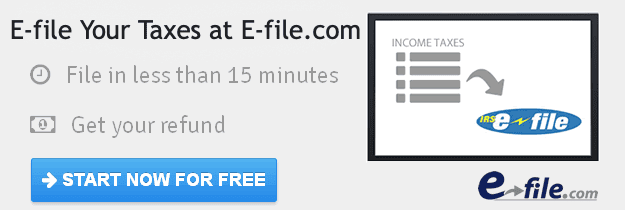 ?>
?>
Free File Program Explained
The Free File Program is a service offered directly through the IRS to help qualified taxpayers prepare and electronically file their federal income taxes. The IRS has partnered with the Free File Alliance, which is a group of private sector tax software companies, to make this service available. The program offers 20 companies with who supply tax preparation software for free.
In 2001, the U.S. Office of Management and Budget’s Quicksilver Task Force initiated various programs to enhance government-to-citizen electronic capabilities. One of those initiatives is the Federal Free File program, launched in 2003, wherein the IRS allows qualifying taxpayers to do their taxes online for free through tax preparation software.
To qualify for the program for the tax year 2019, taxpayers could not have more than $69,000 of adjusted gross income (AGI). This meant that taxpayers who earned more than $69,000 in 2019 but had an AGI within the Free File $69,000 guideline qualified. Approximately one hundred million taxpayers, or seventy percent of all income taxpayers in the United States, qualify for the program.
Taxpayers who qualify for Free File, which are usually households with strained budgets, welcome the concept of receiving quality tax preparation without high cost. However, those taxpayers should be aware that they might not automatically qualify for the Free File program, even if their AGI is $69,000 or less.
Lower-income taxpayers display similar trends to the broader population regarding tax preparation. Most people fill out their tax returns with assistance of paid preparers. In 2008, 55.8 percent of workers with adjusted gross incomes below $30,000 paid a tax professional to prepare their tax returns. Typically, lower-income taxpayers tend to have less complicated tax returns. Yet the number of these taxpayers paying for tax preparation is not significantly different from the percentage found in the broader population. Only a very small proportion of low-income families reported using Volunteer Income Tax Assistance, or VITA clinics. Therefore, the Free File program provides those taxpayers with some relief.
Free File is available 24 hours a day, seven days a week and the software is updated constantly to give American taxpayers the most up-to-date information to complete returns accurately. It allows taxpayers to receive refunds in half the time.
Every federal tax return is transmitted through a secure IRS e-file system and is completely safe. After each return is transmitted to the IRS, a confirmation email is sent to let the taxpayer know that his or her return was accepted.
The program currently has two options. Filers can use an Alliance software provider to file for free or they can use the IRS Free Fillable Forms. The latter doesn't necessarily walk you through preparing income taxes while holding your hand, but they do present the IRS tax forms you need on-screen to be filled in online. Most of the math will need to be done by you, the taxpayer, but the advantage associated with this filing option is that it is free to anyone regardless of their filing status, unlike using software provided by a Free File Alliance partner, which the filer must qualify for (see qualifications here).
The Traditional Free File option has step-by-step help for completing the income tax filing process. Using this option, you able to access a free tax software title through the IRS website and thereby avoid being charged for your return. You will see a notice that you are leaving the IRS website. The eligibility requirements for filing with this option change from year-to-year and, in some cases, from software provider to software provider.
Either way you choose, if you use to Free File there is a chance that the state filing may not be free of charge. Only 21 states have currently established free filing programs and these state programs have no affiliation with the national partnership between the IRS and the Free File Alliance.
- File Taxes at E-file.com
- The Free File Program
- The Free File Alliance
- Free File Qualification
- Ways to Free File
- What is E-Filing
- Information Needed
- Why Should I Efile
- Free File Providers Who Qualifies?>
- Other Tax Articles
- Free Efile
- Tax Extension
- Tax Filing Software
- Terms of Use
- Privacy Policy
- About This Site


 ?>
?> 